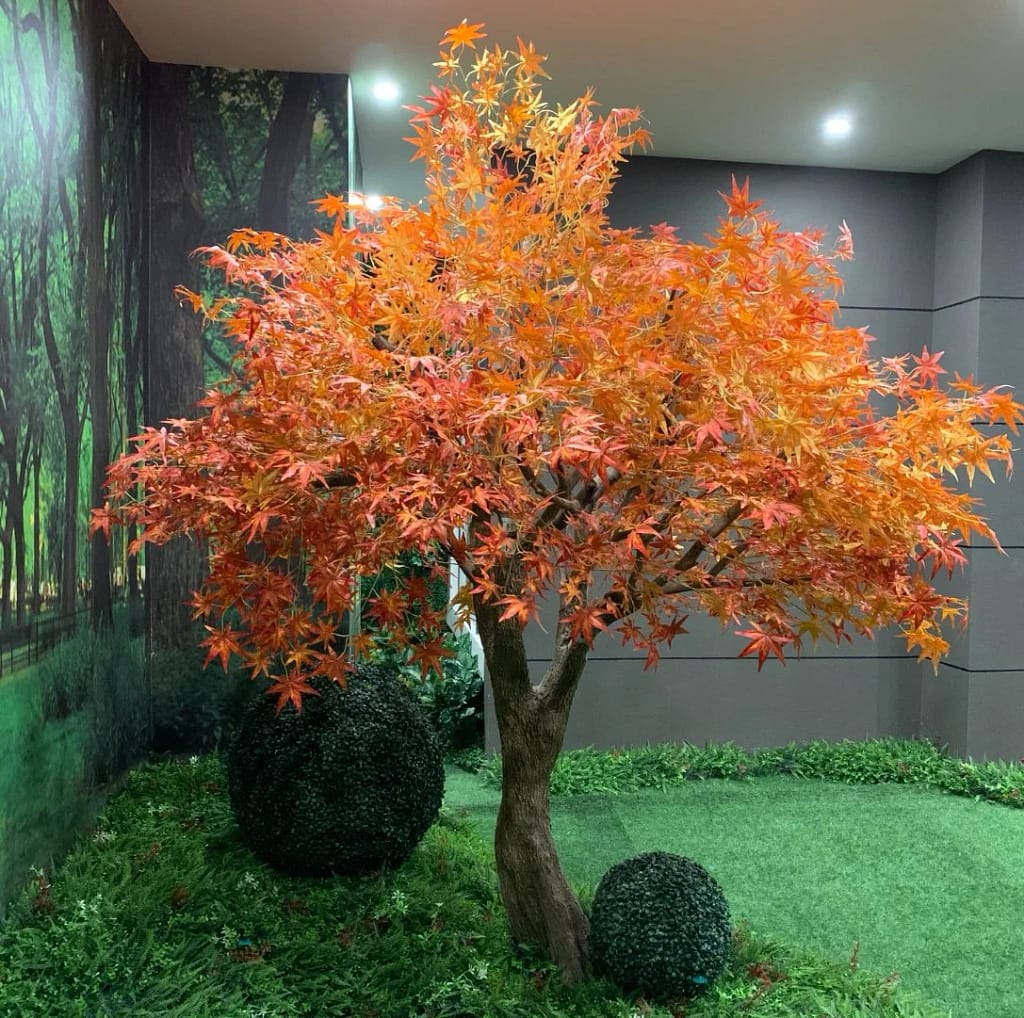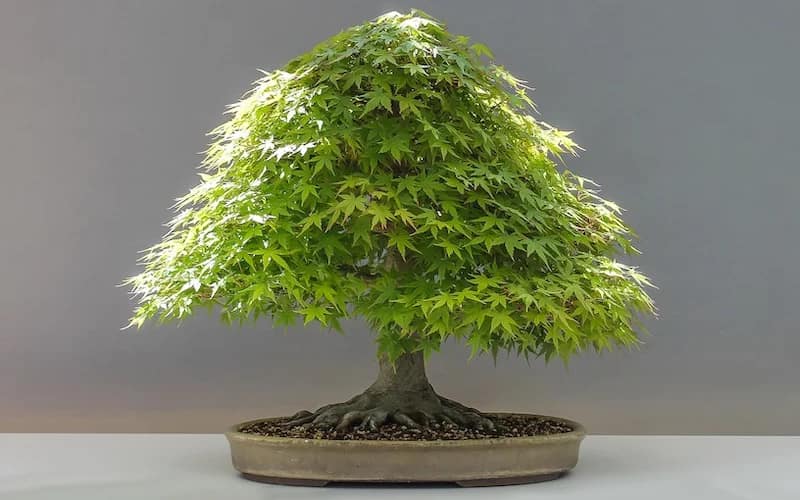Learn about growing a maple tree indoors, including care tips, best practices, and everyday challenges. Transform your indoor space with a beautiful and healthy maple tree.
Introduction
Growing a maple tree indoors can be a rewarding experience, transforming your living space with its vibrant foliage and unique presence. Whether you’re a seasoned gardener or a novice, understanding the specifics of indoor maple tree care is essential for ensuring its health and longevity. This guide provides comprehensive insights and practical advice on how to cultivate a maple tree indoors successfully, covering everything from choosing the right variety to troubleshooting common issues.
Understanding Maple Trees
Types of Maple Trees Suitable for Indoors
Choosing the correct type of maple tree is crucial for indoor cultivation. While not all maple species thrive indoors, some varieties are well-suited for container growth and indoor environments. Popular choices include the Japanese Maple (Acer palmatum), prized for its delicate leaves and vibrant colors, and the Dwarf Maple varieties that adapt well to limited space and indoor conditions.
Benefits of Growing Maple Trees Indoors
Growing a maple tree indoors offers several benefits. Not only does it add a natural aesthetic to your living space, but it also helps improve air quality by filtering pollutants. Caring for an indoor maple tree can also be a therapeutic activity, providing a sense of accomplishment and connection to nature.
Selecting the Right Maple Tree for Indoors
Factors to Consider
When selecting a maple for indoor growth, consider the tree’s mature size, light requirements, and climate adaptability. Ensure that the chosen variety can thrive in your indoor conditions, including temperature and humidity levels.
Popular Indoor Maple Tree Varieties
Some popular varieties for indoor cultivation include:
- Japanese Maple (Acer palmatum): Known for its beautiful foliage and compact size.
- Dwarf Japanese Maple (Acer palmatum var. dissectum): Ideal for small spaces and containers.
- Paperbark Maple (Acer griseum): Features unique peeling bark and vibrant fall colors.
Planting a Maple Tree Indoors
Choosing the Right Pot and Soil
Selecting the appropriate pot and soil is essential for the health of your indoor maple. Use a well-draining potting mix, ideally one that is slightly acidic. Ensure the pot has drainage holes to prevent waterlogging and root rot.
Step-by-Step Planting Guide
- Prepare the Pot: Fill the pot with a layer of gravel for drainage, then add potting mix.
- Plant the Tree: Place the tree in the pot, ensuring the root ball is covered with soil but not too deep.
- Water Thoroughly: After planting, water the tree thoroughly to help settle the soil.
Caring for Your Indoor Maple Tree
Watering Requirements
Indoor maple requires consistent watering, but it’s crucial not to overwater. Regularly check the soil moisture and water when the top inch feels dry. During the growing season, maple trees may need more frequent watering.
Light and Temperature Needs
Maple trees need bright, indirect light to thrive indoors. Place your tree near a window that receives ample sunlight but avoids direct exposure, which can scorch the leaves. Maintain indoor temperatures between 60-75°F (15-24°C) for optimal growth.
Fertilizing Tips
Fertilize your indoor maple tree with a balanced, slow-release fertilizer during the growing season. Be careful not to over-fertilize, as this can harm the tree. A light feeding every four to six weeks is usually sufficient.

Pruning and Shaping Your Maple Tree
Best Practices for Pruning
Pruning is essential for maintaining the shape and health of your indoor maple tree. Remove any dead or diseased branches and trim back overgrown areas to encourage new growth. The ideal time to prune is in late winter or early spring before new growth starts.
Shaping Techniques
Shaping your maple tree can enhance its aesthetic appeal. Use pruning shears to create a balanced shape, removing branches that cross or rub against each other. And remeber regular pruning will help maintain a compact and attractive form.
Preventing and Managing Pests and Diseases
Common Pests Affecting Maple Trees
Indoor maple trees can be susceptible to pests such as aphids, spider mites, and scale insects. Regularly check your tree for signs of infestation and treat promptly with insecticidal soap or neem oil.
Disease Prevention and Treatment
Fungal diseases such as powdery mildew and root rot can affect indoor maple trees. Ensure proper ventilation and avoid overwatering to prevent these issues.If your tree shows signs of disease, remove affected areas and treat with appropriate fungicides.
Seasonal Care Tips for Indoor Maple Trees
Winter Care
During the winter months, reduce watering and ensure your maple tree is not exposed to cold drafts. Maintain consistent indoor temperatures and provide additional humidity if necessary.
Summer Care
In summer, your indoor maple tree may require more frequent watering. Make sure it receives adequate light without direct exposure to harsh sunlight. Consider moving the tree outdoors to a shaded spot for a few hours each day, gradually acclimating it to outdoor conditions.
Transplanting Your Maple Tree Outdoors
When and How to Transplant
If you decide to move your maple tree outdoors, spring or early fall is the best time for transplanting. Gradually acclimate the tree to outdoor conditions by placing it outside for a few hours each day over several weeks.
Adapting to Outdoor Conditions
Ensure the outdoor location has well-draining soil and adequate space for the tree to grow. Water regularly during the initial weeks after transplanting to help the tree establish itself in its new environment.
Troubleshooting Common Problems
Yellowing Leaves
Yellowing leaves can indicate several issues, including overwatering, nutrient deficiency, or lack of light. Adjust your care routine accordingly and check for pests or diseases.
Leaf Drop
Leaf drop can be caused by stress, changes in temperature, or improper watering. Ensure your maple tree is in a stable environment with consistent care.
Stunted Growth
Stunted growth may result from insufficient light, poor soil conditions, or root-bound pots. Repot the tree if necessary and ensure it receives adequate light and nutrients.
Creative Ways to Display Your Indoor Maple Tree
Decorative Pot Ideas
Choose decorative pots that complement your home decor while providing adequate space for root growth. Consider using ceramic or clay pots with intricate designs to enhance the tree’s aesthetic appeal.
Integrating into Home Decor
Place your indoor maple tree in a prominent location where it can be admired. Use it as a focal point in a room or incorporate it into a larger indoor garden setup for a lush, natural look.
FAQs about Growing a Maple Tree Indoors
Can any maple tree be grown indoors? Not all maple trees are suitable for indoor growth. Varieties such as Japanese Maple and Dwarf Japanese Maple are ideal due to their compact size and adaptability to indoor conditions.
How often should I water my indoor maple tree? Water your indoor maple tree when the top inch of soil feels dry. Avoid overwatering and make sure the pot has proper drainage to prevent root rot.
What type of soil is best for indoor maple trees? A well-draining potting mix with slightly acidic properties is ideal for indoor maple trees. Remember make sure the soil retains moisture without becoming waterlogged.
How can I prevent my indoor maple tree from getting pests? Regularly inspect your tree for signs of pests and maintain proper hygiene by removing dead leaves and debris. Promptly treat any infestations using insecticidal soap or neem oil.
When is the best time to prune my indoor maple tree? The best time to prune an indoor maple tree is in late winter or early spring before new growth begins. Regular pruning helps to maintain the tree’s shape and health.
What are the signs that my indoor maple tree needs more light? Signs that your indoor maple tree needs more light include pale leaves, stunted growth, and legginess. Relocate the tree to a brighter spot with indirect sunlight.

